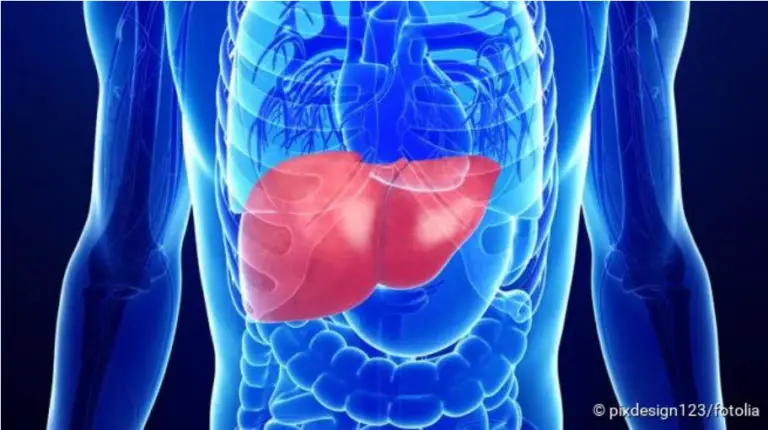Hypertensive Disorders Of Pregnancy (gestosis): causes, consequences
Hypertensive Disorders Of Pregnancy (Gestosis)
Hypertensive disorders of pregnancy are disorders of the body’s adaptation to the changes during pregnancy (gestosis) (Source). This condition can be dangerous for the mother and the child (Source). Any woman can be affected (Source), but there are risk factors that make it more likely to occur. (Source) But what exactly are hypertensive disorders of pregnancy? Why can it be dangerous for mother and child? And how are hypertensive disorders of pregnancy treated? Answers to these and other questions can be found here.
ICD codes for this disease: O16 O12 O11 O14 O15 O10 O13

Hypertensive Disorders Of Pregnancy (Gestosis): Description
The term “hypertensive disorders of pregnancy” is actually outdated, and mostly we find that “gestosis” should be used, but it is still frequently used in colloquial language. It refers to an earlier theory that certain substances released in the body during pregnancy cause poisoning (Source). According to the current state of science, this is not true. Rather, hypertensive disorders of pregnancy are a disturbance in the body’s adaptation to the changes during pregnancy.
Diseases that are triggered by pregnancy are called gestosis. A distinction is made between early gestoses such as morning vomiting during the second to fourth month of pregnancy and late gestosis, which include hypertensive disorders of pregnancy. They occur after the 20th week of pregnancy. Late-stage pregnancies are also called hypertensive pregnancy diseases because they all involve high blood pressure (hypertension). These include:
- Pregnancy hypertension (gestational hypertension)
- Preeclampsia (EPH gestosis)
- Eclampsia
- HELLP syndrome
- Grafting stasis
Hypertensive disorders of pregnancy: Occurrence
According to the guideline on hypertension diseases during pregnancy, six to eight percent of all pregnant women suffer from it. They are among the most common reasons why mothers die during pregnancy.
Pregnancy hypertension develops into pre-eclampsia in almost half of those affected, with ten percent of them developing severe pre-eclampsia. This can lead to HELLP syndrome. In Europe, pre-eclampsia occurs annually in about two percent of all pregnant women. Worldwide, 70,000 women die from pre-eclampsia every year.
Women who already had high blood pressure before becoming pregnant and who suffer from it for more than twelve weeks after giving birth have chronic hypertension. During pregnancy, one in four women can develop thrombocytopenia.
Symptoms
You can find out what signs there are of hypertensive disorders of pregnancy under hypertensive disorders of pregnancy: Symptoms.
Causes and Risk Factors
The exact mechanism of the development of hypertensive disorders of pregnancy has not yet been conclusively researched. Currently, physicians assume that it is a disorder of the body’s adaptation to the changes of pregnancy. Various factors play a role in this. Among other things, a disturbance in the placenta is assumed. This can lead to changes in the blood vessels of the expectant mother and activate her immune system. As a result, fluid leaks from the vessels, water deposits (edema) form, and blood coagulation is activated.
Who Is Affected By Gestosis?
Basically every woman can get a gestosis. However, there are some risk factors that favor the occurrence of hypertensive disorders of pregnancy. These include, among others:
- Pregnancy with multiple births
- Age of pregnant women under 18 or over 40
- Autoimmune diseases
- Blood coagulation disorders
- first pregnancy
- Obesity
- Diabetes mellitus
- Association with distant relatives
- Diseases of the kidneys
Examinations and diagnosis
To have hypertensive disorders of pregnancy diagnosed, consult your gynecologist. First he will ask you in detail about your medical history (anamnesis). He will ask you the following questions, among others:
- Did you suffer from high blood pressure before your pregnancy?
- Is there a known case of hypertensive disorders of pregnancy in your family?
- Have you had a gestation in a previous pregnancy?
- Do you have upper abdominal pain or impaired vision?
There is no special test for the diagnosis of gestosis. Women are therefore subjected to various examinations:
First, your blood pressure is measured. In the case of hypertensive disorders of pregnancy it is often elevated. In rare cases it may have normal values.
Your weight will also be checked. Rapid weight gain may indicate water retention and EPH gestosis.
Furthermore, your urine is examined for proteins. The urine of healthy people usually does not contain any proteins.
In addition, blood is taken from you and examined in the laboratory. If the liver enzymes (transaminases) are elevated, this may indicate that the liver has been damaged as part of hypertensive disorders of pregnancy . The amount of blood platelets is also important: lowered values can indicate HELLP syndrome.
To assess the situation of the unborn child, a cardiotocography (CTG) should be performed. The CTG is used to monitor the child’s heartbeat and contractions. An ultrasound examination (sonography) can also provide information about the baby’s blood supply and growth.
Sonography can also be used to detect changes in the mother’s liver. If the results are not clear, magnetic resonance imaging (MRI) can be performed.
Treatment Of The Hypertensive Disorders Of Pregnancy (Gestosis)
The treatment depends on the type of hypertensive disorders of pregnancy and the symptoms. Water retention (edema), for example, can be treated by simple measures such as:
- Elevation of the legs
- Wearing tight bandages or stockings
- 37°C warm baths
If you only have mild gestational hypertension without other symptoms, the therapy can be carried out on an outpatient basis. You should avoid or reduce stress. Your gynecologist may issue you with a certificate of incapacity to work or a ban on working. In addition, you should have weekly check-up appointments with your gynecologist.
From a blood pressure of 150/100 mmHg pregnant women should be treated as in-patients in hospital.
Treatment In Hospital Of The Hypertensive Disorders Of Pregnancy
In the clinic you can be constantly monitored and adjusted to certain blood pressure-lowering drugs. This is important because lowering blood pressure can prevent life-threatening complications such as a cerebral hemorrhage. There are various active substances that can be used to lower blood pressure. The most common are α-methyldopa, nifedipine, or metoprolol, which are used to lower blood pressure in the long term. In the acute situation, nifedipine, urapidil, or dihydralazine is usually administered. In the three months after birth, the dosage of the antihypertensive drugs should be slowly reduced and finally discontinued completely.
Magnesium is given to prevent the development of eclampsia or to treat it.
Apart from this, it is important to monitor the baby’s health. The best way to do this is with a CTG.
The only way to treat pre-eclampsia causally, i.e. causally, is to give birth to the child. In patients who have already completed the 37th week of pregnancy, the birth is usually initiated. The baby is then mature enough for life outside the womb. For women between 35 and 37 weeks of pregnancy who suffer from severe pre-eclampsia, delivery is considered. Between the 25th and 34th weeks of pregnancy, drug treatment is preferred and early delivery is delayed as long as possible. Before the 24th week of pregnancy is completed, an individual decision is made as to whether to terminate the pregnancy. The focus here is on averting danger to the mother’s life.
If premature delivery is necessary in the case of hypertensive disorders of pregnancy, although the baby’s lung maturation is not yet complete, this can first be accelerated by medication. For this purpose, the mother is injected once with the glucocorticoid betamethasone, between the 25th and 34th week of pregnancy, preferably no later than 48 hours before the birth.
In the case of a HELLP syndrome, birth is often initiated immediately, because otherwise, the situation can become life-threatening for both mother and child.
Precautions
If women have already had pre-eclampsia or similar disorders in a previous pregnancy, they are treated with acetylsalicylic acid (ASA) as a precautionary measure from the 16th week of pregnancy at the latest until the 34th week of pregnancy. This reduces the risk of recurrence of hypertensive disorders of pregnancy until the 37th week of pregnancy. A general intake of ASA during pregnancy is not recommended.
Regardless of possible risk factors, all pregnant women are tested for proteins in their urine from the 20th week of pregnancy. In addition, blood pressure should be checked at every preventive examination. If it is too high, but there are no other symptoms, a long-term blood pressure measurement over 24 hours can be carried out first for a more precise check. In addition, pregnant women can regularly check their blood pressure in the morning and evening to detect any possible increase at an early stage.
Prognosis And Course Of The Disease
Hypertensive disorders of pregnancy can take many courses. Therefore, after diagnosis, constant monitoring of mother and child is crucial. The different types of hypertensive pregnancy diseases can partly merge into one another. For example, gestational hypertension can first develop into pre-eclampsia and then into eclampsia or HELLP syndrome. Eclampsia can also develop suddenly without previous symptoms and can become life-threatening for the pregnant woman within a few hours.
Generally speaking, the various diseases are generally more serious for the mother-to-be than for the child – she is at risk of a cerebral hemorrhage, kidney failure, and liver rupture. In the unborn child, maternal high blood pressure can delay growth. HELLP syndrome can also become life-threatening for the unborn child if the placenta is removed prematurely.
Women who have already had hypertensive disorders of pregnancy have an increased risk of it repeating in the next pregnancy. Pre-eclampsia and HELLP syndrome, for example, recur in about 15 percent of those affected.
This text complies with the requirements of medical literature, medical guidelines and current studies and has been reviewed by medical experts.
ICD codes:
ICD codes are internationally valid codes for medical diagnoses. They can be found, for example, in doctors’ letters or on certificates of incapacity to work.





